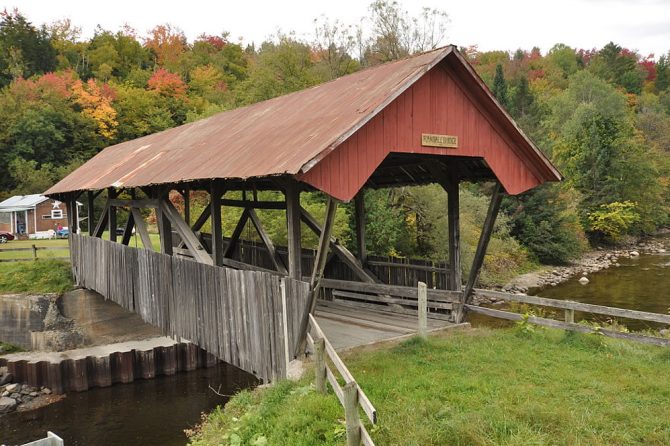Dowsing, also known as “water witching”, has taken place in Vermont since the 1700s. In 1799, a stranger named Winchell arrived in Middletown, VT. He was wanted for counterfeiting in Orange County and was an infamous con-man. He was also a “dowser” who convinced the local populace that he could find hidden treasures and the like. He met another man named Nathaniel Wood, who had started his own religious cult.
Diving Rods and “Rodsmen”
Influenced by Winchell, Wood soon incorporated the dowser’s “divining rod” into his home-grown religious activities. Wood and his followers became known as “rodsmen” and were using their dowsing techniques to look for treasure buried by pirates, fortune telling and divine revelation. Winchell also met and influenced nearby Poultney resident, Joseph Smith (founder of the Mormon faith) to take an interest in dowsing.
For many years, Vermonters have practiced the ancient art of dowsing, also known as “water witching,” to locate underground water sources. This technique involves using a forked stick, rod, or pendulum to guide the dowser towards hidden springs, wells, or water veins beneath the Earth's surface.
Helping People Find Places to Dig Wells
In the early days of Vermont's settlement, dowsers played an invaluable role in helping farmers and homesteaders find places to dig wells on their property. Local dowsers would walk the land, observing the landscape and feeling energetic sensations through their dowsing tools to pinpoint optimal spots to access water. This mystical practice seemed to defy science and logic, yet it yielded surprisingly consistent results.

Dowsing continues to be practiced in Vermont today, though it often raises skepticism from observers. Descendants of old Yankee families maintain the tradition, passing their dowsing skills down to younger generations. Community elders are still sought out to “witch” for water when new well sites are considered on rural properties.
Is Dowsing For Real or Just a Legend?
Proponents believe dowsers tap into a special sensitivity to energy fields in their surroundings. Water emits its own distinct energy as it flows underground, which dowsers can detect. However, concrete scientific evidence for dowsing remains elusive. Controlled studies have not confirmed that dowsing rods or sticks can detect anything beyond chance expectation.
Despite doubts over its validity, Vermont remains home to a thriving community of dowsers who passionately defend their craft. Dowsing organizations across the state teach newcomers this age-old practice. Seasoned witches are happy to demonstrate their skills and share in the wisdom passed down by earlier generations who depended on this folk method to find their most precious resource – water.
Though the world has modernized, the picturesque hills of Vermont still harbor a place for the mystical power of dowsing. For its practitioners, this folk magic embodies an unbroken connection to the past and the distinct character of the land they call home.
Dowsing for Buried Treasure
Although the original interest in dowsing was for such outlandish purposes as seeking buried treasures, it continued on over the years and prompted the change to divining for underground water sources. In 1960, Danville, Vermont became the birthplace of the American Society of Dowsers.
In 2004, 80 year old Edith Greene became a town hero to the people of Montgomery, VT. Her dowsing talents produced all the clean, fresh drinking water they could ever want. She used her own favorite rods are made of faux-copper wire with molded-plastic handles, purchased from a New Hampshire dowser. All morning, Edith watched her rods swing wide, again and again.
Dowsing or Just Plain Luck?
The day progressed and the wind picked up. Something odd, but intriguing was happening below, but she wasn’t sure what. The day finished, she marked out the place where she believed the water source was. Early the following Wednesday, when the huge drilling rig arrived but there was no one to explain to the drill operator that Edith’s markers were not her final recommendations.
When he searched for a dowser’s usual flagged stakes, he noticed a piece of orange tape tied to a tree branch at the field’s edge. He quickly went to work. And then, without warning, a geyser shot upward and splashed the orange surveyor’s tape. He struggled to contain the torrent with a bucket. Water was gushing forth at over 300 gallons a minute, easy, he estimated. Three times as much as they needed. This was the best news Montgomery had had in a long time.
Thank you for reading this post, don't forget to subscribe to our email list for the latest news!





